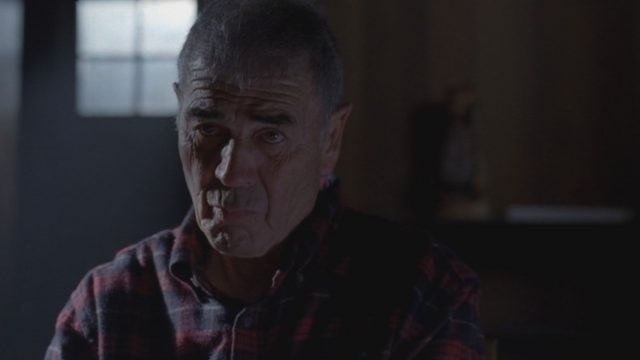Following NerdInTheBasement‘s lead on Friday, I’m subbing in for gillianren today. We assume she’s off fighting crime somewhere.
He said, “take a look through the lens,” and I looked through the camera, and then he had his fingers up the way directors do to show you what a frame looks like, and then he said, “now ask yourself this: what needs to be there?” (Forster recalling advice from John Huston during the filming of Reflections in a Golden Eye, 1961)
That was his first movie, made with legends (Marlon Brando, Elizabeth Taylor) and for legends (Huston, Carson McCullers). Later in the 1960s, he would be the lead in Haskell Wexler’s Medium Cool, one of the landmark independent films of its time. Then a long period of TV series, B movies, and worse, although he had a good role in the young wallflower’s favorite film, The Black Hole; and then, like another young never-made-it matinee idol of his time (Michael Parks) a rediscovery by Quentin Tarantino, who cast him as bail bondsman Max Cherry in Jackie Brown, and bounced him back to–well, not quite stardom, but good and consistent work.
More than anything, Forster feels like the descendant of James Garner, an actor without great range but with an easygoing masculinity and an unshakeable dignity. (No other actor has taken over a role from Dennis Farina as well as he did with the TV series Karen Sisco. I mean, Laurence Fishburne and Scott Glenn are. . .OK, I guess, but Farina is the one and only embodiment of Thomas Harris’ Jack Crawford.) I can’t say that he’s been in consistently better stuff post-Jackie Brown, but he’s been in more–and every time, he shows up, gives the camera exactly what needs to be there, and goes on to the next project.
He’s great in Jackie Brown, accepting his aging but still a little mournful about it, willing to join Jackie on her schemes but only to a point, and that point is the real drama of the film. He may be Tarantino’s greatest ambiguous character. Still, his best work (like so many of our actors now) would come on television. On Breaking Bad, we hear about his character in the fourth season but he only appears in the penultimate episode, and creator Vince Gilligan conceived the role entirely for him. (Forster had worked as a vacuum cleaner salesman, and that’s his character’s cover job.) Forster plays him as professional, distant by necessity (his character is never named on-screen), and still compassionate in his own way–a man of a code. In the still above, he conveys so much with a single look. In one moment, he shows Walter White, and us, exactly how far White has fallen, the ground-level Recognition of tragedy. It’s the sort of performance that takes perhaps fifteen minutes of screen time, and needs a lifetime before it can happen.


